#IoT Technologies
Text
The digital transformation in businesses is now only limited to our imagination. The ever-changing context of technology is predicted to leap in 2024.
While businesses brace for the next advanced technological waves, the Internet of things and machine learning technologies have already started making a great deal. These technologies are envisioned to uphold the rapid evolution in 2024.
The top organizations have begun to adopt machine learning for their IoT platforms and devices. We ensure you get the right approach to your business success with these trending topics in 2024.
Witness the change in business operations in 2024 with advancements in technology, how?
This blog will help you out!
Introduction to IoT and Machine Learning
The Internet of Things (IoT) and machine learning (ML) are two of the most transformative technologies of our time. They are rapidly changing the way we live, work, and interact with the world around us.
The Internet of Things (IoT) and machine learning (ML) stand as two revolutionary technologies shaping the landscape of our modern era. In a world where connectivity and intelligence converge, IoT and ML are not just innovations; they are the architects of a new way of life, redefining how we live, work, and engage with the world around us.
What is IoT(Internet of Things)?
The Internet of Things (IoT) refers to the network of physical devices embedded with sensors, software, and other technologies that allow them to connect and exchange data with each other over the Internet. These devices can range from simple everyday objects like thermostats and light bulbs to more complex industrial machines and medical devices.
Read More: Machine Learning and IOT
#machine learning#machine learninng and IOT#machine learning in software development#IOT technologies
0 notes
Link
IoT technologies are transforming the new economy companies, from enhancing customer service to transportation and more. Explore the benefits of IoT-based solutions.
Read More: https://www.tntra.io/blog/iot-technologies-driving-growth-new-economy-companies/
#IoT Technologies#New Economy Companies#IoT-based solutions#IoT technology#IoT solutions#IoT devices
0 notes
Text

#robot#robotics#robots#technology#art#engineering#arduino#d#electronics#transformers#mecha#tech#toys#anime#robotic#scifi#gundam#ai#drawing#artificialintelligence#digitalart#innovation#illustration#electrical#automation#robotica#diy#design#arduinoproject#iot
23 notes
·
View notes
Text
In this research, CEA-Leti fabricated innovative thin-film batteries on the institute's TINY platform. Standard microfabrication techniques and a 200 mm wafer integration process flow were used to produce sub-square-millimeter microbatteries with a specific areal capacity five times that of today's commercially-available products.
3 notes
·
View notes
Text
Revolutionizing Robotics Development: A Deep Dive into AWS RoboMaker
Transforming robotics development with AWS RoboMaker: simulating, deploying, and innovating with #AWS #Robotics #AI 🤖
In recent years, the field of robotics has indeed undergone a radical metamorphosis, driven by groundbreaking progress in artificial intelligence, cloud computing, and simulation technologies. This multifaceted transformation has not only reshaped the way we perceive and interact with robotics but has also paved the way for innovative applications across numerous industries. At the forefront of…

View On WordPress
#ai#artificial intelligence#AWS IoT Core#AWS RoboMaker#AWS services#cloud deployment#collaborative development#intelligent robotics#monitoring and logging#OTA updates#Pay-as-you-go#robot fleets#Robot Operating System#robotics#robotics applications#robotics development#robots#ROS#ROS 2#security features#simulation environments#technology
2 notes
·
View notes
Text

#iot#iot applications#iot development services#iot technology#iot app development#iot hardware security#iotdevices#iot development company#iotecosystem#iotsolutions
2 notes
·
View notes
Text
Genio 510: Redefining the Future of Smart Retail Experiences
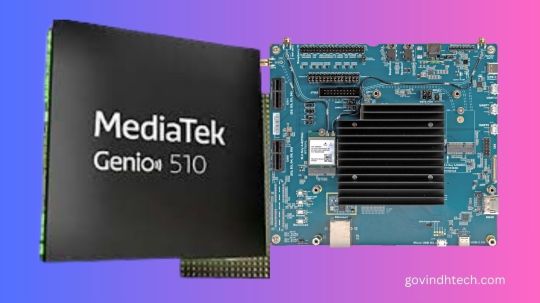
Genio IoT Platform by MediaTek
Genio 510
Manufacturers of consumer, business, and industrial devices can benefit from MediaTek Genio IoT Platform’s innovation, quicker market access, and more than a decade of longevity. A range of IoT chipsets called MediaTek Genio IoT is designed to enable and lead the way for innovative gadgets. to cooperation and support from conception to design and production, MediaTek guarantees success. MediaTek can pivot, scale, and adjust to needs thanks to their global network of reliable distributors and business partners.
Genio 510 features
Excellent work
Broad range of third-party modules and power-efficient, high-performing IoT SoCs
AI-driven sophisticated multimedia AI accelerators and cores that improve peripheral intelligent autonomous capabilities
Interaction
Sub-6GHz 5G technologies and Wi-Fi protocols for consumer, business, and industrial use
Both powerful and energy-efficient
Adaptable, quick interfaces
Global 5G modem supported by carriers
Superior assistance
From idea to design to manufacture, MediaTek works with clients, sharing experience and offering thorough documentation, in-depth training, and reliable developer tools.
Safety
IoT SoC with high security and intelligent modules to create goods
Several applications on one common platform
Developing industry, commercial, and enterprise IoT applications on a single platform that works with all SoCs can save development costs and accelerate time to market.
MediaTek Genio 510
Smart retail, industrial, factory automation, and many more Internet of things applications are powered by MediaTek’s Genio 510.
Leading manufacturer of fabless semiconductors worldwide, MediaTek will be present at Embedded World 2024, which takes place in Nuremberg this week, along with a number of other firms. Their most recent IoT innovations are on display at the event, and They’ll be talking about how these MediaTek-powered products help a variety of market sectors.
They will be showcasing the recently released MediaTek Genio 510 SoC in one of their demos. The Genio 510 will offer high-efficiency solutions in AI performance, CPU and graphics, 4K display, rich input/output, and 5G and Wi-Fi 6 connection for popular IoT applications. With the Genio 510 and Genio 700 chips being pin-compatible, product developers may now better segment and diversify their designs for different markets without having to pay for a redesign.
Numerous applications, such as digital menus and table service displays, kiosks, smart home displays, point of sale (PoS) devices, and various advertising and public domain HMI applications, are best suited for the MediaTek Genio 510. Industrial HMI covers ruggedized tablets for smart agriculture, healthcare, EV charging infrastructure, factory automation, transportation, warehousing, and logistics. It also includes ruggedized tablets for commercial and industrial vehicles.
The fully integrated, extensive feature set of Genio 510 makes such diversity possible:
Support for two displays, such as an FHD and 4K display
Modern visual quality support for two cameras built on MediaTek’s tried-and-true technologies
For a wide range of computer vision applications, such as facial recognition, object/people identification, collision warning, driver monitoring, gesture and posture detection, and image segmentation, a powerful multi-core AI processor with a dedicated visual processing engine
Rich input/output for peripherals, such as network connectivity, manufacturing equipment, scanners, card readers, and sensors
4K encoding engine (camera recording) and 4K video decoding (multimedia playback for advertising)
Exceptionally power-efficient 6nm SoC
Ready for MediaTek NeuroPilot AI SDK and multitasking OS (time to market accelerated by familiar development environment)
Support for fanless design and industrial grade temperature operation (-40 to 105C)
10-year supply guarantee (one-stop shop supported by a top semiconductor manufacturer in the world)
To what extent does it surpass the alternatives?
The Genio 510 uses more than 50% less power and provides over 250% more CPU performance than the direct alternative!
The MediaTek Genio 510 is an effective IoT platform designed for Edge AI, interactive retail, smart homes, industrial, and commercial uses. It offers multitasking OS, sophisticated multimedia, extremely rapid edge processing, and more. intended for goods that work well with off-grid power systems and fanless enclosure designs.
EVK MediaTek Genio 510
The highly competent Genio 510 (MT8370) edge-AI IoT platform for smart homes, interactive retail, industrial, and commercial applications comes with an evaluation kit called the MediaTek Genio 510 EVK. It offers many multitasking operating systems, a variety of networking choices, very responsive edge processing, and sophisticated multimedia capabilities.
SoC: MediaTek Genio 510
This Edge AI platform, which was created utilising an incredibly efficient 6nm technology, combines an integrated APU (AI processor), DSP, Arm Mali-G57 MC2 GPU, and six cores (2×2.2 GHz Arm Cortex-A78& 4×2.0 GHz Arm Cortex-A55) into a single chip. Video recorded with attached cameras can be converted at up to Full HD resolution while using the least amount of space possible thanks to a HEVC encoding acceleration engine.
FAQS
What is the MediaTek Genio 510?
A chipset intended for a broad spectrum of Internet of Things (IoT) applications is the Genio 510.
What kind of IoT applications is the Genio 510 suited for?
Because of its adaptability, the Genio 510 may be utilised in a wide range of applications, including smart homes, healthcare, transportation, and agriculture, as well as industrial automation (rugged tablets, manufacturing machinery, and point-of-sale systems).
What are the benefits of using the Genio 510?
Rich input/output choices, powerful CPU and graphics processing, compatibility for 4K screens, high-efficiency AI performance, and networking capabilities like 5G and Wi-Fi 6 are all included with the Genio 510.
Read more on Govindhtech.com
#genio#genio510#MediaTek#govindhtech#IoT#AIAccelerator#WIFI#5gtechnologies#CPU#processors#mediatekprocessor#news#technews#technology#technologytrends#technologynews
2 notes
·
View notes
Text
Cracking the Code: Manifesting Success with AI-Driven Marketing Strategies
As the domain of marketing technology continues to grow at a rapid pace and is driven by growth in artificial intelligence (AI) and personalization, marketers encounter exciting opportunities as well as daunting challenges. Adapting to these changes requires practical approaches that allow organizations to stay current, manage change effectively, and operate at scale.
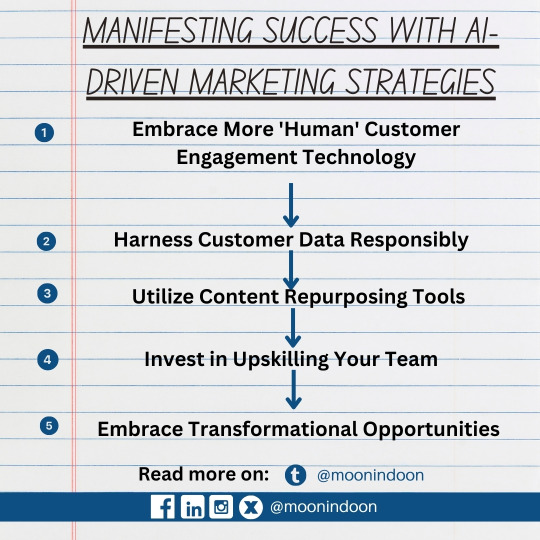
In this article, we explore five practical tactics to help modern marketing teams adapt and thrive in this dynamic environment:
Embrace More 'Human' Customer Engagement Technology:
While chatbots have been around for decades, advancements in AI have significantly enhanced their capabilities. Today, AI-powered chatbots can engage with customers in a remarkably human-like manner, providing round-the-clock support and valuable insights.
Leveraging chatbots not only improves customer experience but also generates valuable data for outbound marketing initiatives. By analyzing customer queries and interactions, marketers can easily get valuable data that can enhance their marketing strategies.
Harness Customer Data Responsibly:
Customers willingly share personal information with companies, providing valuable insights into their preferences, behaviours, and sentiments. Marketers must mine this data responsibly and use it to deliver personalized experiences and targeted offers.
By leveraging predictive analytics and machine learning, marketers can analyze data faster and make informed decisions to enhance omnichannel marketing efforts.
Utilize Content Repurposing Tools:
Authentic content remains paramount in marketing, but creating content for various channels and platforms can be challenging. Content repurposing tools like Optimizely and Interaction Studio help marketers adapt long-form content into social media posts, videos, and other formats.
Expanding your content footprint not only enhances brand visibility but also allows for faster learning and adaptation to changing market dynamics.
Invest in Upskilling Your Team:
While AI-based tools offer significant automation potential, managing and mastering these technologies require skilled professionals. Marketers must invest in continuous learning and cross-functional collaboration to stay ahead.
Effective leadership and teamwork are essential for navigating the complexities of modern marketing. Encouraging knowledge sharing and collaboration across teams fosters a culture of innovation and growth.
Embrace Transformational Opportunities:
As AI continues to reshape the marketing landscape, traditional metrics of success are being redefined. Marketers must embrace the transformative potential of AI and other emerging technologies to serve their customers better.
When evaluating new ideas and technologies, marketers should prioritize customer value and align them with their brand and company values. By focusing on solutions that genuinely benefit customers, marketers can drive meaningful impact and success.
In conclusion, navigating the ever-evolving domain of AI-driven marketing requires a blend of innovative strategies and steadfast principles. By embracing more human-centric engagement technologies, responsibly harnessing customer data, utilizing content repurposing tools, investing in team upskilling, and embracing transformational opportunities, modern marketing teams can position themselves for success. The key lies in adapting to change while remaining true to customer-centric values, fostering collaboration, and prioritizing solutions that genuinely benefit the audience. With these practical tactics in hand, marketers can not only thrive but also lead the way in shaping the future of marketing.
#marketing#AI driven marketing#AI#AI-driven marketing#artificial intelligence#inteligência artificial#ai technology#ai tools#chatgpt#marketing digital#digital marketing#branding#design#human-centric engagement#innovative strategies#customer-centric values#collaboration#content tools#Upskilling#automation#software#networking#innovation#efficiency#iot#'Human' Customer Engagement Technology#user generated content#content marketing#content creation#content creator
2 notes
·
View notes
Text
#importance of critical thinking and innovation skills#21st century is critical thinking.#innovative ideas#top companies in educational technology#end-to-end solutions to K-12 students#robotics labs and AI/IoT labs#importance of 21st-century skills#Generation of Critical Thinkers and Innovators
2 notes
·
View notes
Text
What is the difference between LoRa and LoRaWAN?
Introduction:
LoRaWAN serves as the communication protocol connecting the LoRa signal (which carries sensor data) to the respective application(s). To simplify, think of LoRa as the radio signal transporting the data, while LoRaWAN acts as the governing framework that dictates how this data travels and communicates within the network.
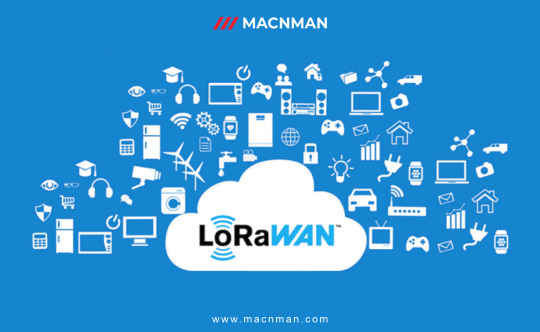
What is LoRa?
LoRa, short for Long Range, is a wireless technology known for its extended range and energy-efficient characteristics. It operates within unlicensed wireless frequencies, similar to how Wi-Fi utilizes the unregulated 2.4 GHz and 5 GHz bands. The specific frequency employed by LoRa varies depending on the geographic location of the deployment. For instance, in North America, LoRa operates in the 915 MHz band, while in Europe, it utilizes the 868 MHz band and in India it is 865 MHz to 867 MHz.
It is crucial to be aware of the legally permitted frequencies for LoRa deployments in each respective location. In terms of its communication range, LoRa can transmit data up to a distance of 10 kilometers in ideal conditions with a clear line of sight.
Low Power Wide Area (LPWA) technology can be categorized into two main types. On one hand, there's cellular LPWA, which utilizes mobile networks. Examples of cellular LPWA technologies include Narrowband IoT (NB-IoT) and Long Term Machine Type Communications (LTE-M). On the other hand, there's non-cellular LPWA like LoRa, which disseminates data by dividing it into encoded packets and transmitting them across various frequency channels and data rates.
What is LoRaWAN?
LoRaWAN is a network protocol that serves as the bridge between the LoRa signal, which carries sensor data, and the applications that use this data. In simpler terms, LoRa represents the radio signal responsible for transmitting the data, while LoRaWAN is the communication protocol that manages and defines how this data is transmitted across the network.
LoRaWAN offers several valuable advantages, including low power consumption, extensive coverage range, and cost-effective connectivity for devices that don't require high data transfer speeds. It's an excellent choice when cellular connectivity is too expensive or Wi-Fi coverage is unavailable. Some of the most compelling use cases for LoRaWAN include:
Agriculture: LoRaWAN's long-range capabilities provide reliable connectivity for rural applications where high data transfer rates are not necessary, making it ideal for agricultural applications. LoRaWAN sensors for agriculture are used for cattle management, soli monitoring, and temperature monitoring.
Asset Tracking and Logistics: LoRaWAN supports cost-effective location tracking of assets, with optimized battery life, making it a practical choice for asset management and logistics.
Smart Metering: LoRaWAN's sensors have the ability to reach even in underground utility locations makes it a suitable choice for smart metering applications.
Smart Homes: LoRaWAN can penetrate obstacles like walls and supports battery-powered devices with low data consumption, making it an attractive connectivity option for smart home applications.LoRaWAN sensors for smart homes are used for Air quality monitoring, water quality monitoring, and temperature & humidity monitoring.
Healthcare: The low power consumption, affordability, and reliability of LoRa technology make it suitable for connected health applications. IoT solutions based on LoRa hardware can monitor high-risk patients or systems around the clock, ensuring comprehensive health and medical safety management.LoRaWAN Gateways and sensors enhance production practices, enable efficient tracking and monitoring of shipments, and facilitate the development of cutting-edge medications.
Industrial Applications: LoRa-enabled devices and sensors play a crucial role in the transformation of industrial IoT operations like mentioned above. They digitize legacy processes and equipment, leading to increased profits, lower costs, and enhanced efficiency. These devices provide real-time data for predictive maintenance, machine health monitoring, reduced downtime, and more.
3 notes
·
View notes
Link
Are you curious how the Internet of Things (IoT) can revolutionize transportation and logistics? From optimizing routes and reducing fuel costs to enhancing fleet management and improving customer service, IoT has the potential to streamline operations and boost profitability. Don't miss out on this game-changing technology - look at the infographic now!
#technology#logistics#logisticsindustry#appdevelopment#softwaresolutions#iot#transport and logistics#mobiosolutions#uk
8 notes
·
View notes
Text
Bluetooth Beacon
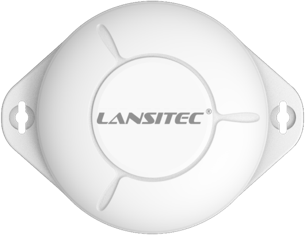
The Bluetooth Beacon constantly advertises iBeacon messages according to settings. It has two built-in high-capacity button cells. The maximum battery life is approximately 5 years with a advertise interval @500ms.
The beacon is mainly used for indoor tracking and asset tracking. It can also be attached to assets and therefore used for asset tracking with the help of our Bluetooth gateways.
For More:
#Lansitec#LoRa#IoT#Bluetooth#BluetoothBeacon#AssetTracking#Technology#Beacon#IndoorTracking#Wireless
2 notes
·
View notes
Text
The Internet of Things (IoT): A Revolution in Connectivity
The world as we know it is rapidly transforming thanks to the Internet of Things ( IoT ). IoT is paving the way for a new era of interconnectedness, revolutionizing the way we interact with technology, and reshaping various aspects of our daily lives. In this article, we’ll delve into the concept of IoT, its diverse applications, and the significance of understanding this transformative technology. We’ll also introduce a fundamental course that will help individuals explore IoT in-depth.
#Power of Connectivity the Revolution of IoT with this Free Course#Power of Connectivity#Revolution of IoT#Free Course#Internet of Things#Connectivity#IoT Revolution#Technology Trends#Emerging Technologies#Connectivity Solutions#IoT Education#Digital Transformation#Free Learning#Smart Devices#IoT Applications#Connected World#IoT Training#Connectivity Revolution#IoT Innovation#Free Educational Resources#Tech Revolution#freeudemy
2 notes
·
View notes
Text
Researchers at Tohoku University have developed guidelines for a single-nanometer magnetic tunnel junction (MTJ), allowing for performance tailoring to meet the requirements of diverse applications, ranging from AI/IoT to automobiles and space technologies. The breakthrough will lead to high-performance spintronic non-volatile memory, compatible with state-of-the-art semiconductor technologies. The details were published in the journal npj Spintronics on January 4, 2024.
#nanotechnology#electronics#ai#IOT#semiconductors#automotive#technology#engineering#aerospace#computing
3 notes
·
View notes
Text
My Journey with Azure IoT Hub: Connecting and Managing IoT Devices at Scale
The Internet of Things (IoT), which enables seamless connectivity and automation across numerous industries, has completely changed the way we engage with technology. I was curious to learn more about the Internet of Things and its possible uses as an aspiring IoT enthusiast. My experience using Azure IoT Hub, Microsoft’s cloud-based IoT platform, and how it assisted me in connecting and managing IoT devices at scale are both discussed in this blog.
Getting Started with Azure IoT Hub

To embark on my IoT journey, I began by understanding the fundamentals of Azure IoT Hub. Azure IoT Hub is a fully managed service that acts as a central hub for bi-directional communication between IoT devices and the cloud. It provides secure, reliable, and scalable connectivity for IoT solutions. Setting up an Azure IoT Hub was my first step. While the process was relatively straightforward, I encountered a few challenges along the way.
Connecting IoT Devices
Once Azure IoT Hub was set up, I delved into the world of IoT devices. I worked with various types of IoT devices, ranging from simple sensors to complex industrial machines. Connecting these devices to Azure IoT Hub required the implementation of device-specific protocols such as MQTT or HTTP. Additionally, I focused on securing device connections and data transmission by utilizing security features provided by Azure IoT Hub.
Real-world examples of IoT devices connected to Azure IoT Hub are aplenty. For instance, in the healthcare industry, wearable devices can transmit patient vitals to Azure IoT Hub, allowing healthcare providers to monitor and respond to critical situations promptly. In smart homes, IoT devices such as thermostats and security cameras can be connected to Azure IoT Hub, enabling remote control and monitoring capabilities.
Managing IoT Devices at Scale
As my IoT project grew, I encountered the need to scale up the number of connected devices. Azure IoT Hub offered robust device management features that simplified the process of managing a large fleet of devices. I could remotely monitor the health, status, and firmware version of each device, enabling efficient troubleshooting and maintenance. Implementing best practices for device management, such as grouping devices based on location or functionality, enhanced the overall operational efficiency of my IoT solution.
Data Ingestion and Processing
Data collected from IoT devices is a valuable asset that can drive actionable insights and informed decision-making. Azure IoT Hub facilitated the ingestion and routing of data to Azure services for further processing and analysis. I had the opportunity to work with Azure Stream Analytics and Azure Functions, which enabled real-time data processing, transformation, and visualization. Leveraging these services allowed me to unlock the true potential of IoT data and derive meaningful insights.

Security and Compliance
Any IoT solution must prioritize security. Azure IoT Hub provided robust security features that ensured end-to-end protection of IoT deployments. These features included device authentication, message encryption, and integration with Azure Active Directory for access control. Additionally, Azure IoT Hub helped me meet compliance and regulatory requirements by providing built-in support for industry standards such as ISO 27001, HIPAA, and GDPR. Throughout my journey, I learned valuable lessons and implemented best practices for securing IoT solutions.
Scalability and Performance
Scaling an IoT solution to handle thousands or millions of devices is a complex task. Azure IoT Hub offered scalability features that allowed me to effortlessly handle large-scale IoT deployments. With Azure IoT Hub’s device-to-cloud messaging capabilities, I could reliably transmit messages to and from a massive number of devices. Moreover, I gained insights into optimizing IoT solutions for performance by considering factors such as message size, frequency, and device capabilities.
Real-World Use Cases
To understand the versatility of Azure IoT Hub, it is crucial to explore real-world use cases. In the manufacturing industry, Azure IoT Hub can be leveraged to connect and monitor machines on the factory floor, ensuring optimal performance and predictive maintenance. In the agriculture sector, IoT devices connected to Azure IoT Hub can collect data on soil moisture levels, temperature, and humidity, enabling farmers to make data-driven decisions for irrigation and crop management. These use cases highlight the valuable role that Azure IoT Hub plays in various domains and industries.
Future of IoT and Azure IoT Hub
The future of IoT is promising, with emerging trends shaping the landscape. As IoT continues to evolve, Azure IoT Hub will play a crucial role in enabling seamless connectivity, advanced analytics, and artificial intelligence capabilities. Integration with other Azure services and continuous updates from Microsoft ensure that Azure IoT Hub remains at the forefront of IoT innovation. The possibilities for IoT applications are limitless, and Azure IoT Hub will continue to empower developers and organizations to build robust and scalable IoT solutions.
Throughout my journey with Azure IoT Hub, I gained valuable insights and experiences. Azure IoT Hub simplified the process of connecting and managing IoT devices, providing a reliable and scalable platform. The seamless integration with other Azure services allowed me to unlock the full potential of IoT data. Moreover, the security and compliance features provided peace of mind, ensuring that my IoT solution was protected from threats. Overall, Azure IoT Hub has been instrumental in my IoT journey, contributing to enhanced efficiency and productivity.
Recommendations and Tips
For those interested in starting their own IoT journey with Azure IoT Hub, I offer the following recommendations and tips:
Begin with a clear understanding of your IoT use case and requirements.
Familiarize yourself with the documentation and resources provided by Microsoft to gain a solid foundation.
Start small and gradually scale your IoT solution as needed.
Take advantage of the device management and security features offered by Azure IoT Hub.
Leverage other Azure services such as Azure Stream Analytics and Azure Functions to derive meaningful insights from IoT data.
Stay updated on emerging trends and best practices in the IoT space.
To deepen your knowledge of IoT and Azure IoT Hub, I recommend exploring Microsoft’s official documentation, participating in the ACTE Technologies Microsoft Azure training, and attending IoT-focused conferences and events.

Azure IoT Hub has proven to be a powerful and comprehensive platform for connecting and managing IoT devices at scale. Throughout my journey, I witnessed the transformative potential of IoT solutions and the crucial role played by Azure IoT Hub in enabling seamless connectivity, advanced analytics, and robust security. As IoT continues to evolve, Azure IoT Hub will undoubtedly remain at the forefront of IoT innovation, empowering organizations to build scalable and efficient IoT solutions. I encourage readers to embark on their own IoT journeys, leveraging the capabilities of Azure IoT Hub to unlock the full potential of IoT. Join me in embracing the future of IoT and revolutionizing industries through connected devices. Please leave your comments, stories, and inquiries in the space provided below. Let’s continue the conversation and explore the endless possibilities of IoT together.
#microsoft azure#cloud services#information technology#education#tech#technology#iot#innovation#cloud computing
3 notes
·
View notes
Text
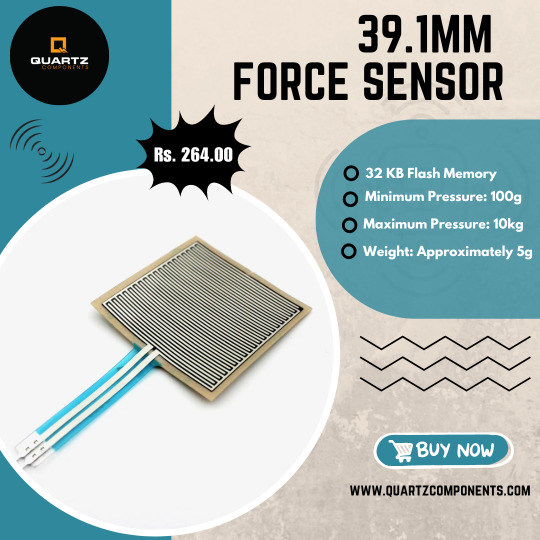
Visit quartzcomponents.com now to purchase the 39.1mm Force Sensor for just Rs. 264.00. This limited-time offer won't last, so act quickly to secure your order. Don't miss out on this fantastic deal for a high-quality force sensor!
Product Link - https://quartzcomponents.com/collections/popular-products/products/39-1mm-force-sensor
#electronics#Technology#Innovation#Gadget#Science#TechNews#DigitalWorld#IoT#SmartDevices#Electronics#FutureTech#Engineering#CuttingEdge#AI#Robotics#TechTrends#electricalengineer#electricalwork#electricalcontractor#electricalhacks#electricallife#electricalsky#electricalprojects#electricalwires#electricalengineers
2 notes
·
View notes